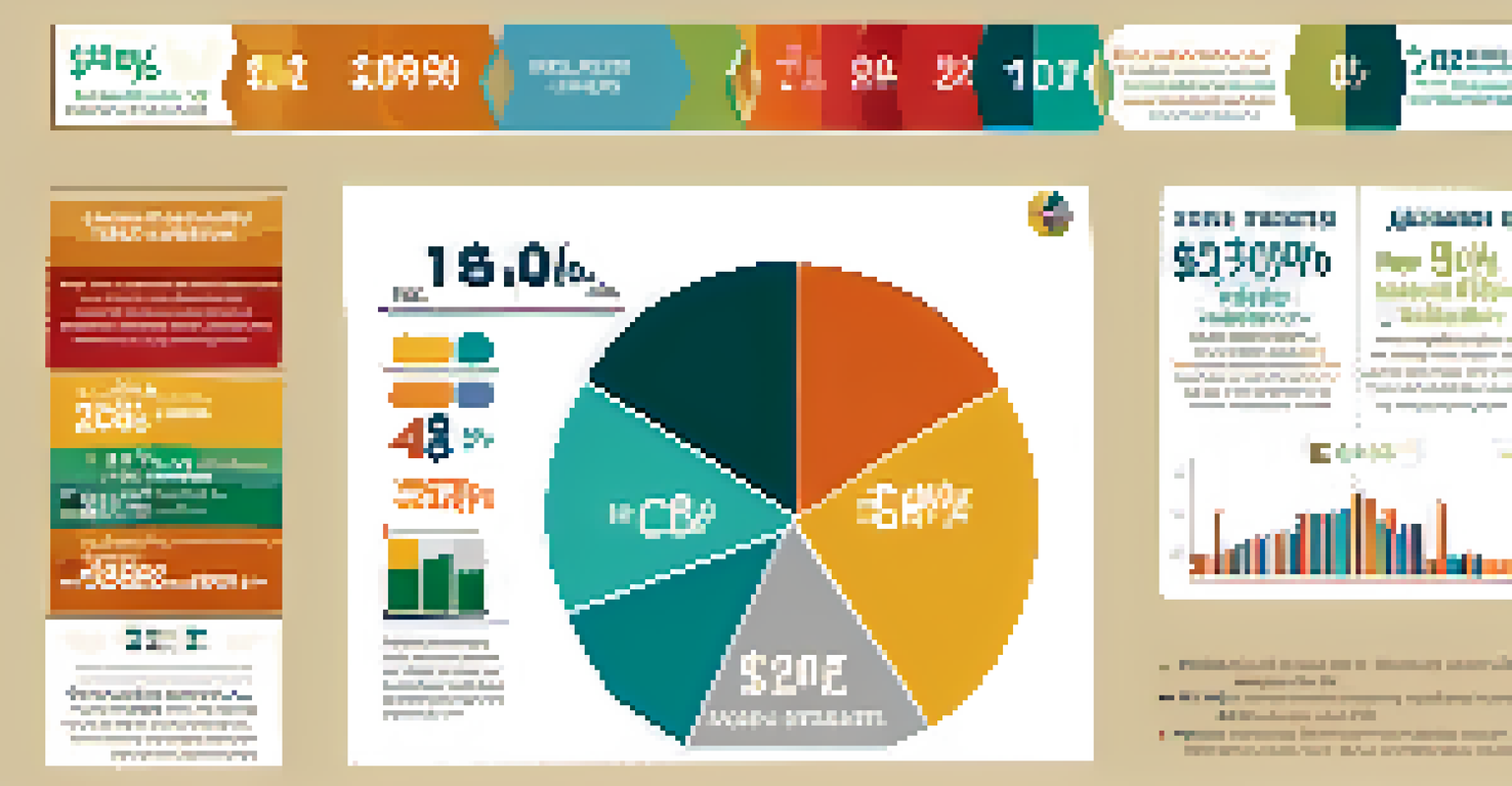How to Facilitate Meaningful Discussions on Housing Policies

Understanding the Importance of Housing Policies
Housing policies are crucial as they influence access to affordable living and community stability. They dictate how neighborhoods develop and can impact everything from school funding to local economies. By understanding these policies, we can better advocate for our communities and ensure that everyone has a place to call home.
Housing is a human right, not a privilege.
Engaging with housing policies can feel daunting, but it’s essential to break them down into manageable concepts. Think of it like piecing together a puzzle; each policy is a piece that contributes to the bigger picture of community well-being. When we grasp these policies, we can discuss their implications more effectively.
Ultimately, informed discussions about housing policy can lead to better decision-making. By participating in these conversations, we help shape the environment we live in and ensure that it meets the needs of its residents. This awareness can empower individuals to advocate for change.
Creating an Open and Inclusive Discussion Environment
To facilitate meaningful discussions, it’s vital to create an environment where everyone feels comfortable sharing their thoughts. This can be achieved by setting ground rules that promote respect and openness. Imagine a safe space where diverse opinions are welcomed; this fosters richer conversations.

Encouraging participation from various community members is essential. Consider using icebreakers or informal gatherings to make discussions less intimidating. When people see that their voices matter, they are more likely to contribute, leading to a more dynamic conversation.
Engage in Housing Policy Discussions
Understanding and participating in housing policies empowers communities to advocate for affordable living and stability.
Inclusivity not only enhances the quality of discussions but also ensures that multiple perspectives are considered. This broadens the understanding of housing policies and their impacts. By valuing every voice, we enrich our discussions and ultimately create better solutions.
Utilizing Data to Support Your Arguments
In discussions about housing policies, data plays a pivotal role in backing up claims and arguments. Statistics about housing availability, affordability, and demographic changes can provide a solid foundation for discussions. Think of data as your trusty sidekick; it helps make your case stronger and more credible.
The best way to predict the future is to create it.
However, it’s important to present data in a way that’s digestible. Use visuals like charts or infographics to illustrate key points. This not only makes the information more engaging but also helps participants grasp complex ideas quickly.
When participants see the facts behind policy discussions, they are more likely to engage thoughtfully. Data-driven conversations can shift the focus from opinions to evidence, paving the way for more constructive outcomes. Remember, the goal is to inform, not overwhelm.
Encouraging Empathy Through Personal Stories
While data is important, personal stories can be equally powerful in discussions about housing policies. Sharing real-life experiences helps humanize the issues at hand and fosters empathy among participants. Think of it as adding color to a black-and-white picture; it brings depth and emotion to the conversation.
Invite community members to share their housing journeys, whether they faced challenges or found success. These narratives can spark deeper connections and understanding between participants. When people see the human side of policy issues, they are more likely to care and engage.
Foster Inclusivity for Better Ideas
Creating an open environment for diverse voices enhances discussions and leads to richer, more effective solutions.
Empathy can bridge gaps between differing opinions. By understanding the experiences of others, participants may find common ground and be more willing to collaborate on solutions. This emotional connection is key to fostering meaningful discussions.
Facilitating Structured Discussions for Better Outcomes
Structured discussions can help keep conversations focused and productive. Using a clear agenda and defined topics can help participants stay on track. Think of it as a roadmap; it guides the discussion and helps prevent it from veering off course.
Incorporate techniques like round-robin sharing, where everyone gets a chance to speak. This ensures that all voices are heard and can help manage dominant personalities in the group. A well-structured conversation promotes fairness and encourages participation from everyone.
By maintaining structure, facilitators can ensure that discussions yield actionable outcomes. This approach helps participants leave with not just opinions, but also potential solutions and a clearer path forward. Structure paves the way for meaningful change.
Identifying Common Goals and Shared Values
During discussions on housing policies, it’s essential to identify common goals and values among participants. This helps unite diverse groups and focuses energy on shared aspirations. Picture a team working toward a common goal; this collaboration can lead to impressive results.
Facilitators can guide conversations towards identifying these shared values by asking open-ended questions. What does everyone hope to achieve regarding housing in the community? This inquiry can reveal underlying motivations that might not be immediately apparent.
Utilize Data and Personal Stories
Combining data with personal narratives strengthens arguments and fosters empathy, making policy discussions more impactful.
When participants recognize their shared goals, they are more likely to work together toward solutions. This sense of unity can transform discussions from debates into collaborative efforts, making it easier to approach policy changes as a team. Together, we can move mountains.
Following Up and Sustaining Engagement Post-Discussion
Meaningful discussions don’t end when the meeting does; following up is crucial for sustaining engagement. Consider sending out a summary of the discussion highlights and action items. This keeps the momentum going and reminds participants of their commitments.
Establishing a regular check-in schedule can also help maintain interest. Whether it’s monthly meetings or a dedicated online platform, ongoing engagement fosters a sense of community and accountability. Think of it as tending to a garden; regular care ensures it thrives.

Encouraging participants to share progress and challenges can enrich future discussions. This creates a loop of feedback and improvement, allowing the group to adapt and grow. Sustained engagement ultimately leads to lasting change in housing policies.
Leveraging Technology for Broader Reach
In today’s digital age, technology can be a powerful tool for facilitating discussions on housing policies. Online platforms can help reach a broader audience, allowing more individuals to participate in the conversation. Think of it as opening the doors to a larger community; the more diverse voices, the better.
Consider using social media, webinars, or discussion forums to engage people who might not be able to attend in-person meetings. These platforms can facilitate real-time discussions and feedback, making it easier to share ideas and insights. Plus, they allow for flexibility in participation.
Utilizing technology not only broadens the reach but also encourages ongoing dialogue. Participants can continue discussions asynchronously, sharing resources and updates as they come across them. This dynamic approach keeps the conversation alive and fosters a collaborative spirit.